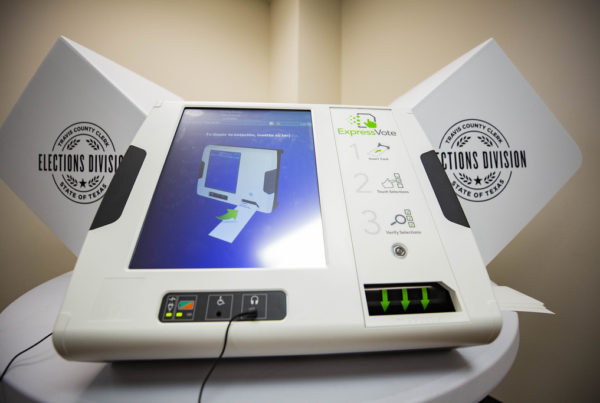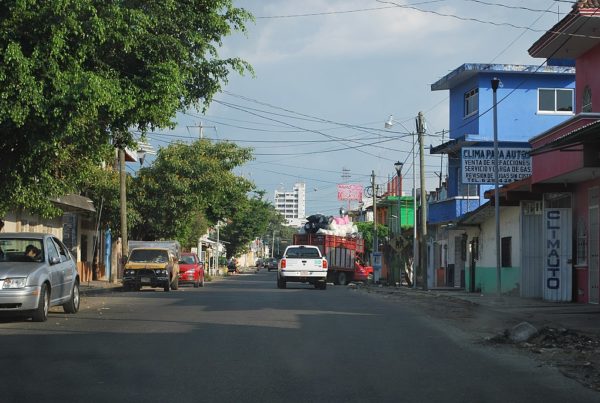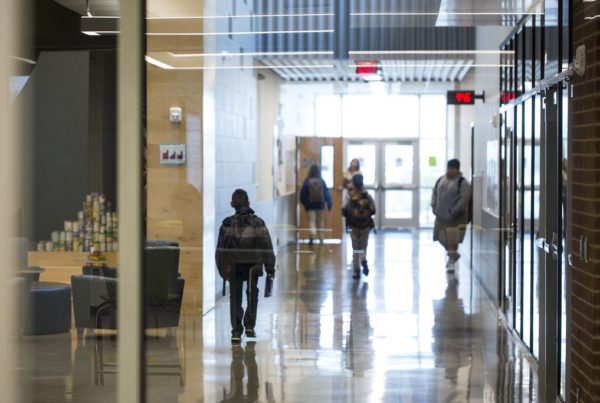For years, California was seen as the bellwether for political and cultural change in America. But Texas may be the new trendsetter, with its skyrocketing population, increasing diversity and booming economy.
Steven Pedigo explored this idea in a recent opinion article for The New York Times, in which he deemed Texas “the future of America.” Pedigo is founding executive director of the LBJ Urban Lab and a professor of practice at the LBJ School of Public Affairs at the University of Texas at Austin.
Listen to the interview with Pedigo above or read the transcript below to learn more about how population growth in Texas cities busts the myth that Texas is primarily rural and homogeneous, and how what happens here could determine changes elsewhere in the country.
This interview has been edited lightly for clarity.
Texas Standard: The saying used to be, “As California goes, so goes the rest of the country.” So, has Texas really overtaken California in that regard?
Steven Pedigo: One of the things that was interesting to me when putting this piece together was to go back and look at the growth of California in relation to the U.S., and then also do some comparisons, actually, to Texas. And what’s interesting, if you take a look at the developments between 1970 and 2020 looking over a 50-year horizon, what you actually find is Texas is booming, whereas California’s growth has actually now, sort of, in a sense, [is] trailing the U.S. In fact, over the last 20 years, California has actually been below the U.S. population growth. And so one of the things I argue in the piece in The New York Times is that if we really want to understand what’s happening across the country in terms of urbanization, the change of demographics and where growth is being driven, look here in the Lone Star State because we are the future, maybe, of what the U.S. has to hold.
Most of the numbers you draw from are from the latest U.S. census, and you mentioned urbanization. I was struck that Texas is actually urbanizing faster than California. Could you point to some other changes in how Texas might represent the future of the United States?
First of all, look where Texans are moving. What’s apparent is, if you look at the growth, maybe in the last decade, our metropolitan areas are growing about 18% and our rural population is growing about 1%. About 90% of the new Texans are now looking and living in metropolitan areas, so we’re absolutely, in a sense, becoming much more urban and much more metropolitan. I think the other thing that is striking for me as well is that when you look at, who are those Texans, right? And there was a great piece in The Texas Tribune a few weeks back when the data came out that said that 95% of all the Texans are people of color. Well, if you peel that back even more, what you find is that when we look at that growth, in fact, for every white resident we’ve added in the state of Texas, we’ve added three Black residents, three Asian residents, 11 Hispanics and three multiracial folks. And so we are becoming much more diverse. And just like the U.S. is seeing this diversity, we’re seeing, this here happen in Texas, and a lot of it happening in our urban metropolitan areas.
If Texas is the future for the rest of the nation, is that a good thing?
I think it depends on what side of the party lines that you find yourself on, right? I mean, I think the thing that I write about in this piece is that we typically look at Texas as this monolithic sort of rural state where oil is produced, and not thinking about our sort of knowledge-based economy and our urbanization and really becoming this more diverse area. And so what’s interesting is you look at the numbers and look at the social policies and what, perhaps, you start to see [is] a little bit of cognitive dissonance there. Whereas as I raised in the piece is that, are we seeing Texas represented in the policies that we’re seeing coming out of the statehouse? And that’s a really big question.
And so for liberals and for moderates who may want to support women’s right to choose, don’t like the open carry law, want mask mandates and things in our schools, they may find the growth of Texas in this argument about the future of us not settling. I think one of the things that I think is a possibility that is, could be good, good for the country, is that in Texas, one of the things that has been very key to our growth and our success has been the prominent seat that our private sector has played at the table in terms of our policymaking. We’re one of the few states where we really embrace the idea of having public and private leadership together. And so one of the things I argue in the piece is that we can’t throw that out. We actually need our private sector, actually, maybe to come back to the table and help us maybe moderate some of these because we’re putting a bit of some sand in the engines, and they’re maybe going slow down this growth a bit if we don’t think this through a bit more.














